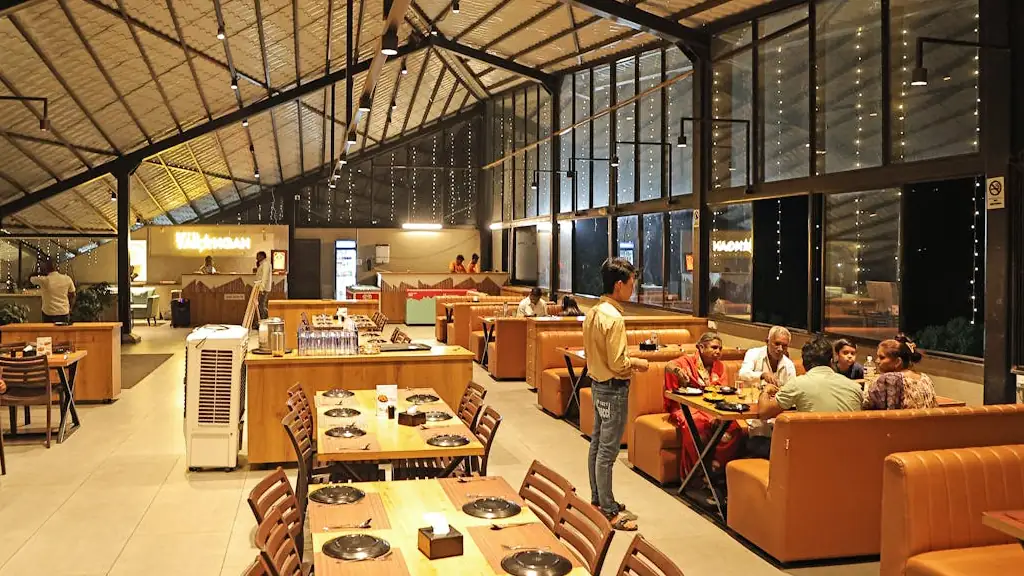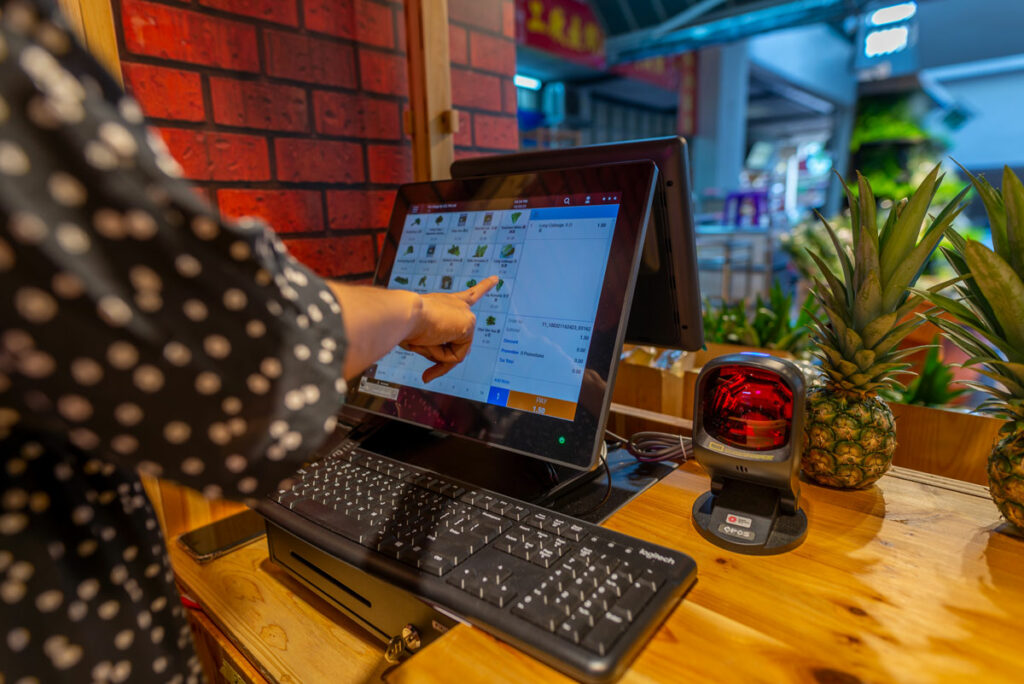Dining out should be a pleasurable experience: a break from the routine, a chance to savour good food and be in good company. Customers, however, may harbour a range of frustrations, from long waits to billing errors. To overcome these issues, a modern Point of Sale (POS) system for F&B businesses should offer powerful solutions to streamline operations, reduce errors and improve overall service quality. By leveraging modern POS System technology, restaurants and F&B businesses can deliver a smoother customer experience and encourage repeated business.

1. How Restaurant POS Systems Can Aid in Reducing Long Wait Times and Improving Efficiency
Long wait times would often be cited as one of the most common complaints a restaurant might receive. Long wait times might not only be caused by waiting for food, but also to get seated, for billing settlement or other services. This might cause frustration among customers, lower customer retention rates and overall loss in revenue. Prolonged wait times can disrupt restaurant operations, create bottlenecks in both front-of-house and back kitchen workflows and damage the overall dining experience for customers. To stay competitive and boost guest satisfaction, restaurant owners must find smart, efficient ways to reduce customer wait times and improve service speed.
This is where modern restaurants and F&B POS systems have their role. The right POS system can help restaurants streamline their operations, enhance communication, and keep the restaurant running smoothly.
Essential POS System Features to Reduce Wait Times:
Table Management Software
POS systems with integrated table management features allow restaurants to optimise seating, track table turnover, and provide accurate wait time estimates. By visualising the real-time floor plan and monitoring table status, restaurant staff can efficiently understand table availability, improve host-server communication and reduce customer wait times, ensuring a faster, more organised dining experience.
Online Reservations and Waitlists
Integrated online reservations and waitlist management systems within restaurant POS systems allow customers to place bookings for restaurants in real time or join a queue remotely, eliminating the need for a physical person to wait in long lines at the restaurant entrance and reducing potential customer frustration. Real-time SMS updates and notifications can keep customers informed on their own queue status. Data collected on this information can also be used to make more informed decisions for staffing by predicting peak hours.
Mobile Ordering and Pre-Pay Options
Through mobile ordering, customers are able to place orders and pay in advance, reducing time spent waiting in line at the restaurant or at the table for food. This feature of mobile ordering and having pre-pay options is ideal for those in fast-casual restaurants or quick-service restaurants, thereby increasing the rate of table turnover and leading to increase in sales.

2. Eliminate Order and Billing Errors with a Smart Restaurant POS System
Inaccurate orders or billing errors can damage a restaurant’s reputation, leading to a loss of revenue, negatively impacting reviews and a decline in customer trust and loyalty. Diners expect to have precision and transparency for these areas; thus, to constantly deliver excellent service, order accuracy and error-free billing is a must.
Essential POS system features that prevent order and billing errors:
Digital Order Taking utilising Handheld POS Devices:
With digital ordering systems such as iPads and Android Tablet devices, customers can input their own order selections directly into the handheld POS system and prevent potential discrepancies with handwritten items. This reduces miscommunication and decreases the delay between customers and the back of house since orders can be sent to the kitchen without delay.
Kitchen Display Systems and Order Confirmation Screens
Kitchen display systems (KDS) provide a clear visual representation of orders to kitchen staff, ensuring accuracy and efficiency. At the same time, customer-facing order confirmation screens allow diners to review their order in real-time, confirming accuracy and addressing any discrepancies before the food is prepared. This two-way confirmation visual confirmation minimises miscommunication and reduces the likelihood of incorrect orders reaching the table.
Automated Billing and Integrated Payment Processing
An advanced POS system automatically calculates the bill, including taxes and discounts, removing the risk of a miscalculation. Integrated payment processing ensures smooth, secure transactions and minimises any billing discrepancies. This reduces the time needed by staff to deal with billing and continues to build trust with customers by providing accurate receipts all the time.

3. Boost Restaurant Efficiency and Eliminate Slow Service with the Right POS System
Slow and inefficient service is one of the top reasons why restaurant owners lose customers in today’s fast-paced environment, where we are able to obtain items instantaneously. Delays in ordering food, delivering food or poor service can lead to frustration amongst customers, which in turn, can result in a loss of revenue. To deliver operational excellence and efficient service, a restaurant POS system needs to be able to eliminate these service delays.
Essential Restaurant POS System Features that Enhance Restaurant Efficiency:
Integrated Payment Processing for quicker Checkout times:
Restaurant POS systems with in-built payment processing simplify the checkout process for the consumer by providing multiple payment options, including mobile wallets, credit cards and contactless payments. This reduces wait times at the cashier, increases table turnover and enhances overall guest satisfaction. Integrated payments also reduce the risk of human error and streamline reconciliation.
Server Performance Tracking and Analysis
Advanced POS analytics allow managers to monitor server performance in real time, identifying inefficiencies that slow down service performance. Metrics such as average service time, average bill order, order accuracy and guest satisfaction can aid in understanding gaps in service issues to ensure better service and staffing.
By adopting a modern POS solution tailored for restaurant efficiency, businesses can streamline service, reduce operational delays, and deliver a faster, smoother dining experience that keeps customers coming back.
Real-time Order Updates via Kitchen Display Systems
Kitchen Display Systems (KDS) and server handheld devices provide real-time updates on order status, creating smooth communication between the kitchen and serving staff. This eliminates communication gaps and reduces the risk of errors or delays. KDS systems also provide chefs with clear, organised order information, leading to faster and more accurate food preparation. Servers can input and modify orders on handheld POS devices, which immediately sync with the kitchen. This eliminates delays, reduces errors, and accelerates food preparation and delivery—key to providing quick, accurate service.

4. Drive Customer Loyalty and Personalisation with a Smart Restaurant POS System
In today’s highly competitive restaurant industry, customers increasingly value personalised dining experiences and tangible rewards for their continued patronage. Modern diners expect more than just good food; they want to feel recognised and rewarded for their patronage. Restaurants that fail to deliver on personalisation risk losing valuable customers to competitors who offer tailored service, relevant offers, and meaningful incentives. A lack of personalisation can lead to generic experiences, missed upsell opportunities, and lower customer retention.
Essential POS Features for Personalisation and Customer Loyalty:
Customer Relationship Management (CRM) System: POS systems equipped with in-built CRM functionality can meticulously track customer preferences, detailed order histories, and specific dietary restrictions. This data empowers staff to provide highly personalised recommendations, anticipate customer needs, and deliver exceptional service. For example, a server could suggest a new dish based on a customer’s previous orders or remember to omit a specific ingredient due to a known allergy.
Loyalty Programs:
POS-integrated loyalty programs reward repeat customers through points, discounts, and exclusive offers, much of it directly tied to their preferences and purchase behavior. Whether it’s a free dessert after multiple visits or special birthday offers, these programs build emotional connections and incentivise repeat business. A well-executed loyalty program not only boosts customer retention but also drives higher lifetime value.
Targeted Promotions and Marketing Campaigns
Leveraging the customer data stored within the POS system, restaurants can generate highly personalised and highly targeted promotions. Instead of generic discounts, they can offer personalised deals based on past purchases, preferred menu items, or special occasions. This level of customisation enhances customer engagement, increases the relevance of promotions, and ultimately drives sales by appealing directly to individual customer interests.

5. Simplify Bill Splitting with POS Bill Splitting Features
Going out for dinner with a group of multiple people might prove to be a hassle if there are issues with bill splitting. Manually calculating or itemising dishes and drinks can lead to frustration, delays in table turnover, and mistakes. To ensure a smooth, hassle-free experience, a restaurant’s POS system should be equipped with advanced bill splitting functionality.
Essential POS Features for Splitting Bills
Split Bill Functionality:
An ideal POS system would have bill splitting capabilities to allow customers and staff to divide bills efficiently, whether by equal parts, items, or percentage. This reduces the risk of error and speeds up the checkout process for both the customer and the business. Between small groups like 4 or large groups like 20, a POS with a bill splitting functionality ensures that each person is paying their fair share, and enhance the group experience by making it seamless.
Individual Itemisation Functionality:
With itemised billing, the modern POS system would automatically generate per-item orders and generate a detailed breakdown. This would ensure maximum transparency and accuracy for group payments.

A modern POS system is Essential for Success in Restaurants and F&B Establishments
In a competitive dining landscape, leveraging technology such as a modern electronic point of sale (EPOS) system to enhance the customer experience is no longer a luxury but a necessity. A well-integrated and robust restaurant POS system with the mentioned features would streamline order-taking and processing, thereby reducing wait times and minimising errors in the back kitchen. Seamless payment options such as contactless payment, mobile wallets, and intuitive bill splitting would eliminate pain points such as long checkout queues.
Real-time menu updates and inventory management prevent miscommunication between the customer, server and kitchen and minimises disappointment from customers. Digital ordering and loyalty programs, integrated within the EPOS systems, offer personalised experiences and rewards, fostering customer retention. By mitigating these common pain points and encouraging operational excellence, restaurants can achieve improved customer satisfaction, leading to positive reviews and repeat business. The system’s efficiency also translates to faster table turnover and reduced operational costs, driving higher profitability.
Transform your F&B business today with EPOS
EPOS Singapore Pte Ltd provides modern POS solutions designed to help your business grow! Small-Medium Enterprises (SMEs) in Singapore are eligible for up to 50% support for the adoption of EPOS Pre-Approved Solutions under the IMDA SMEs Go Digital programme. EPOS Singapore also offers Digital Marketing Solutions for SMEs seeking business growth, providing tailored marketing strategies catered to the unique needs of each business. Last but not least, keep your customers returning with the EPOS Loyalty Program, powered by WhatsApp! Contact us today to transform your restaurant with the right POS.

